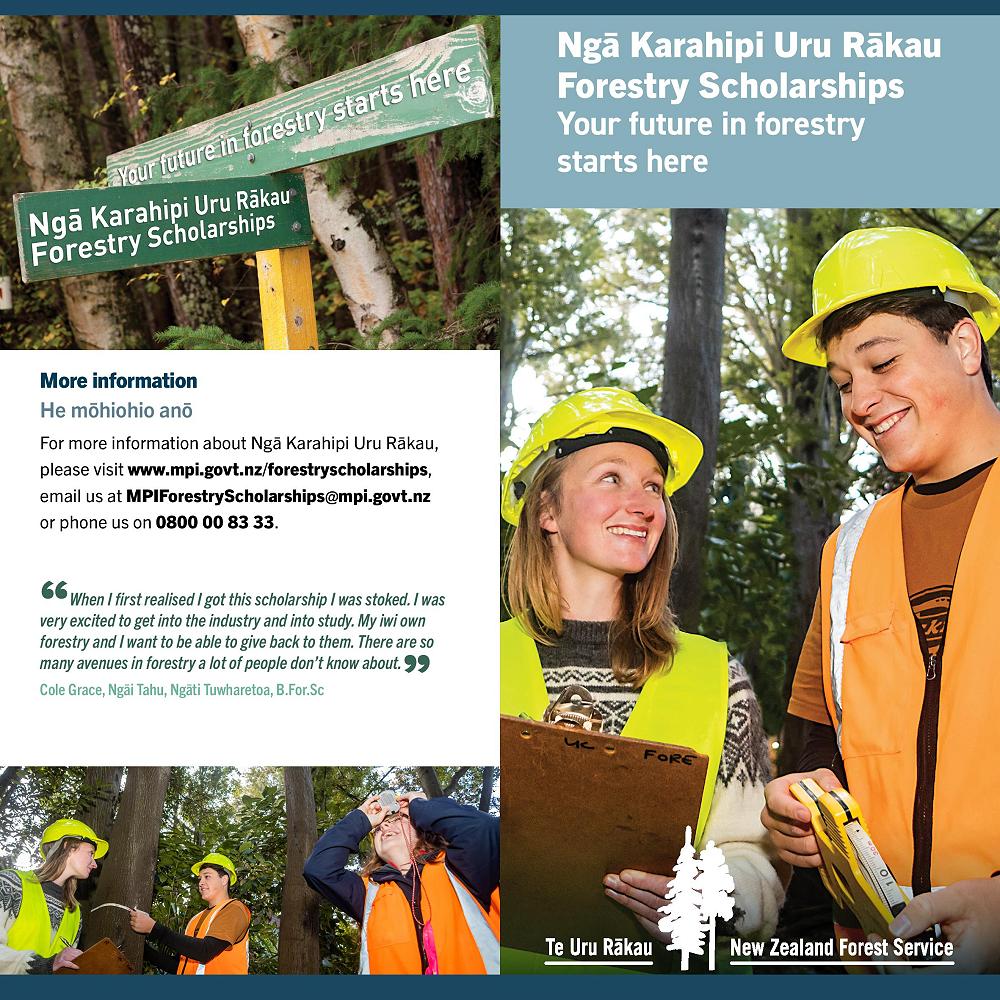You know, there’s a certain magic that happens when you step into a forest. The air smells different – earthy, alive, sometimes sweet with pine or damp with moss. The sounds are a symphony: the rustle of leaves, the distant call of a bird, the whisper of the wind through the canopy. For as long as I can remember, that feeling has been my compass. I wasn’t just drawn to the woods; I felt a deep, undeniable connection, a calling to understand, protect, and nurture these incredible ecosystems. I knew, with every fiber of my being, that my future lay among the trees. I wanted to be a forester.
But dreams, as beautiful as they are, often come with a hefty price tag, especially when they involve a university education. My family wasn’t wealthy. We lived comfortably, but the idea of four years of tuition, books, and living expenses loomed like a giant redwood I wasn’t sure I could climb. The initial excitement of pursuing a degree in forestry was quickly overshadowed by a growing knot of anxiety in my stomach. How was I going to afford it? Would my dream remain just that – a dream?
That’s when I stumbled upon the lifeline that would eventually carry me through: forestry scholarships. It wasn’t a sudden, blinding revelation. It was more like discovering a hidden trail in a dense forest, one step at a time, each new discovery illuminating the path ahead. I learned that I wasn’t alone in this struggle, and more importantly, that there were people and organizations out there who believed in the future of forestry as much as I did, and were willing to invest in it.
My journey began with a lot of frantic searching. I typed "forestry scholarships" into every search engine imaginable. I visited my high school guidance counselor, who, bless her heart, had a stack of general scholarship pamphlets but not much specific to my niche. It was through sheer persistence, and a growing understanding of how the scholarship world worked, that I started to find my footing.
One of the first things I learned was that not all scholarships are created equal, and they certainly don’t all look for the same thing. There are scholarships based purely on academic merit – the straight-A students who excel in science and math. I was a good student, but not always top of the class, so while I applied for some of these, I knew I needed a broader strategy. Then there were need-based scholarships, which considered your family’s financial situation. These were certainly relevant to me, and I made sure to complete the FAFSA (Free Application for Federal Student Aid) and any institutional aid forms diligently.
But the real game-changer for me was discovering the scholarships tailored specifically for forestry and natural resources students. These were the ones that truly resonated, the ones where my passion for the environment wasn’t just a side note, but the main event. It was like finally speaking a language everyone understood.
I remember finding out about the scholarships offered by the Society of American Foresters (SAF). This organization is the backbone of the forestry profession in the U.S., and they’re deeply invested in supporting the next generation. They had various awards, some for undergraduates, some for graduate students, often looking for a combination of academic potential, leadership qualities, and a clear commitment to sustainable forest management. Applying for their scholarship felt different; it felt like I was already part of the community.
Then there were the state-level opportunities. Many states have their own forestry associations or departments of natural resources, and they often provide funding for students planning to work within their state’s forests. I looked into my own state’s forestry association, and sure enough, they had a program. These often had specific criteria, like attending an in-state university or demonstrating an interest in local forestry issues, which was perfect for me.
Universities themselves are a goldmine, though sometimes a well-hidden one. When I started applying to universities with strong forestry programs, I made sure to dig deep into their departmental websites, not just the general financial aid pages. Often, specific departments like "Forestry and Environmental Resources" or "Natural Resources Management" have their own endowments and scholarships funded by alumni or industry partners. These might be smaller awards, perhaps a few hundred or a couple of thousand dollars, but they add up quickly. I found scholarships named after pioneering foresters, or ones dedicated to students from specific counties, or those focusing on particular areas of study like wildland fire management or urban forestry. Each one was a piece of the puzzle.
Beyond these, I discovered scholarships from private companies involved in the timber industry, paper production, or environmental consulting. These companies, understanding the importance of a skilled workforce, often invest in future talent. I recall one from a large paper company that supported students pursuing degrees in wood science and technology – a fascinating field that also falls under the broad forestry umbrella.
And let’s not forget about local organizations. My hometown had a small conservation trust, and I was surprised to find they offered a modest scholarship to local students pursuing environmental fields. It wasn’t a huge sum, but it showed me that opportunities could crop up in unexpected places, often from people who knew the local landscape and valued its preservation.
So, how did I navigate this labyrinth of opportunities? It wasn’t easy, but I developed a system, much like a forester plans a sustainable harvest.
First, research was paramount. I created a spreadsheet. Yes, a good old-fashioned spreadsheet. Each row was a scholarship, and columns tracked everything: the organization, the award amount, the eligibility criteria, the deadline, what materials were needed (essay, letters of recommendation, transcript), and the status of my application. This kept me organized and sane. I spent hours sifting through websites, reading eligibility requirements carefully. It’s crucial to only apply for scholarships you genuinely qualify for; don’t waste your time or the committee’s.
Second, I honed my essay-writing skills. This was perhaps the most vital part. Every application seemed to ask for a personal essay, often posing questions like, "Why do you want to study forestry?" or "How will you contribute to the field?" This wasn’t just about showing off my knowledge of trees; it was about telling my story. I wrote about that magical feeling in the forest, about my first camping trip, about volunteering at a local park, about the moment I realized the intricate web of life within an ecosystem. I poured my passion onto the page, making sure my voice was authentic and enthusiastic. I talked about my specific interests – maybe it was sustainable harvesting, or wildlife habitat restoration, or even the burgeoning field of urban forestry. The key was to be specific, personal, and to show, not just tell, my commitment.
Third, I cultivated strong relationships for letters of recommendation. This meant being a good student, but also being engaged. I asked teachers who knew me well, especially my science teachers, and a supervisor from a summer job I had at a local nature center. I didn’t just ask them for a letter; I provided them with a resume, a list of my achievements, and a brief explanation of why I was applying for forestry and what these scholarships meant to me. This made it easier for them to write a specific, compelling letter that highlighted my strengths and character.
Fourth, I meticulously prepared all supporting documents. Transcripts, resumes, lists of extracurricular activities – everything had to be in order. I made sure my resume highlighted any relevant experiences, even if they seemed small: volunteering for a park cleanup, participating in an environmental club, or even just working in my garden. It showed initiative and a practical interest in the natural world.
Fifth, I learned to manage deadlines. This spreadsheet I mentioned earlier? It became my best friend. Missing a deadline, no matter how perfect your application, means you’re out. I tried to submit everything at least a week before the due date, just in case there were technical glitches or last-minute requirements.
It wasn’t always a smooth path. I faced rejections, sometimes many of them. Each "no" felt like a small sting, a doubt creeping in. But I learned to not take it personally. The scholarship world is competitive, and sometimes it comes down to a committee’s specific focus or an overwhelming number of qualified applicants. I just kept applying, kept refining my essays, and kept believing in my dream.
One particular scholarship application stands out in my memory. It was from a small, family-run foundation dedicated to conservation. Their application asked for a rather unusual essay: "Describe a moment in nature that changed your perspective." I wrote about hiking in the national forest near my home after a devastating wildfire. The landscape was charred, silent, and initially, it felt like an irreparable loss. But then, I saw the tiny green shoots emerging from the blackened earth, the resilient pine cones cracking open in the heat to release new seeds. It was a powerful lesson in nature’s incredible capacity for renewal and the critical role of foresters in guiding that process. I poured my heart into that essay, and it was that scholarship, a surprisingly generous one, that ultimately provided the biggest chunk of my first year’s tuition.
The financial aid from these scholarships didn’t just cover tuition; it covered books, some of my living expenses, and even allowed me to participate in a summer field camp without worrying about the cost. It lifted an immense burden, allowing me to focus entirely on my studies and immerse myself in the world of forestry. I spent countless hours in the field, learning about dendrology, silviculture, forest ecology, and wildland fire management. I learned to identify trees by their bark, leaves, and even their winter buds. I measured timber, analyzed soil samples, and mapped forest stands. Each lesson brought me closer to understanding the complex, vital role forests play in our world.
My scholarship journey wasn’t just about the money; it was about validation. It was about knowing that others saw the value in what I wanted to do, that they believed in the future of our forests and in my ability to contribute to it. This belief fueled my academic performance and motivated me to get involved in student organizations, volunteer for conservation projects, and even mentor younger students interested in forestry.
For anyone out there standing at the edge of the woods, dreaming of a future among the trees but worried about the financial leap, please know this: the resources are there. You might have to search for them, you might have to write a lot of essays, and you might face some rejections, but don’t give up. Your passion for forestry is a powerful asset.
Start by exploring your chosen university’s specific departmental scholarships. Reach out to the Society of American Foresters – they are an invaluable resource. Investigate state forestry associations and government agencies like the USDA. Look into local conservation groups and even private companies in the timber and paper industries. Don’t be afraid to apply for smaller scholarships; they add up!
Remember to tell your unique story. What draws you to the forest? What problems do you want to solve? What kind of impact do you hope to make? Your genuine enthusiasm and commitment are your strongest arguments. Get good grades, but also get involved. Volunteer, join clubs, show initiative. These experiences will not only make your application stronger but will also enrich your understanding of the field.
Today, I’m a practicing forester. Every day, I get to walk among the trees, applying the knowledge and skills I gained during my education. I help manage forests for timber, for wildlife, for water quality, and for recreation. I work with landowners to develop sustainable plans and with communities to understand the value of their local green spaces. And every time I step into the woods, I remember that young, anxious person who almost let financial fears extinguish a dream. I remember the countless hours spent on scholarship applications, the essays, the nerve-wracking wait for decisions. And I feel a deep sense of gratitude – not just for the financial aid, but for the belief that others placed in me.
Forestry is more than just a job; it’s a calling. It’s about being a steward of our natural world, ensuring that these vital ecosystems thrive for generations to come. If you feel that calling, don’t let financial hurdles deter you. The path might be winding, and you might need to bushwhack a bit, but with persistence, passion, and the incredible support available through forestry scholarships, you too can navigate the green path and make your dream a living reality. The forest is waiting.


